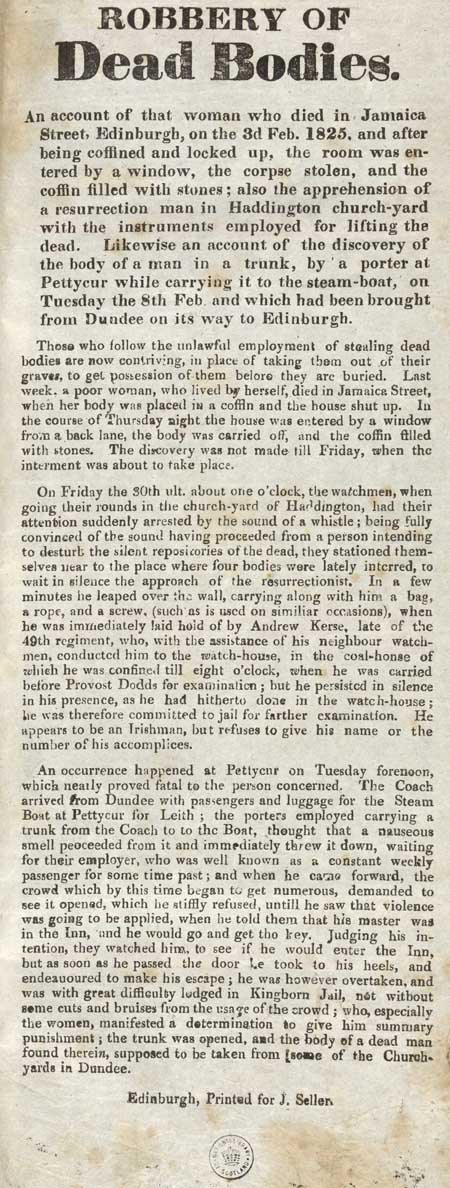Commentary
This report begins: 'An account of that woman who died in Jamaica Street, Edinburgh, on the 3d Feb. 1825, and after being coffined the room was entered by a window, the corpse stolen and the coffin filled with stones; also the apprehension of a resurrection man in Haddington church-yard with the instruments employed for lifting the dead. Likewise an account of the discovery of the body of a man in a trunk, by a porter at Pettycur while carrying it to the steamboat, on Tuesday the 8th Feb. and which had been brought from Dundee on its way to Edinburgh.' It was published by J. Seller of Edinburgh, in 1825. This broadside reflects the level of concern that existed in 1820s Edinburgh over the practice of resurrectionism, or body-snatching. Some anatomy lecturers, frustrated by laws that allowed only the bodies of certain executed criminals to be donated to medical science, were willing to pay well for corpses that could be used for experiment and demonstration. The practice thus gained popularity among the criminal fraternity. Resurrectionism held a particular horror for many devoutly presbyterian Scots, who believed that to gain salvation their bodies must be buried on hallowed ground. Reports recounting dark and salacious deeds were popular with the public, and, like today's sensationalist tabloids, sold in large numbers. Crimes could generate sequences of sheets covering descriptive accounts, court proceedings, last words, lamentations and executions as they occurred. As competition was fierce, immediacy was paramount, and these occasions provided an opportunity for printers and patterers to maximise sales.
View Transcription | Download PDF Facsimile
|
 |
Date of publication:
1825 shelfmark: F.3.a.13(106)
 View larger image
View larger image
|


